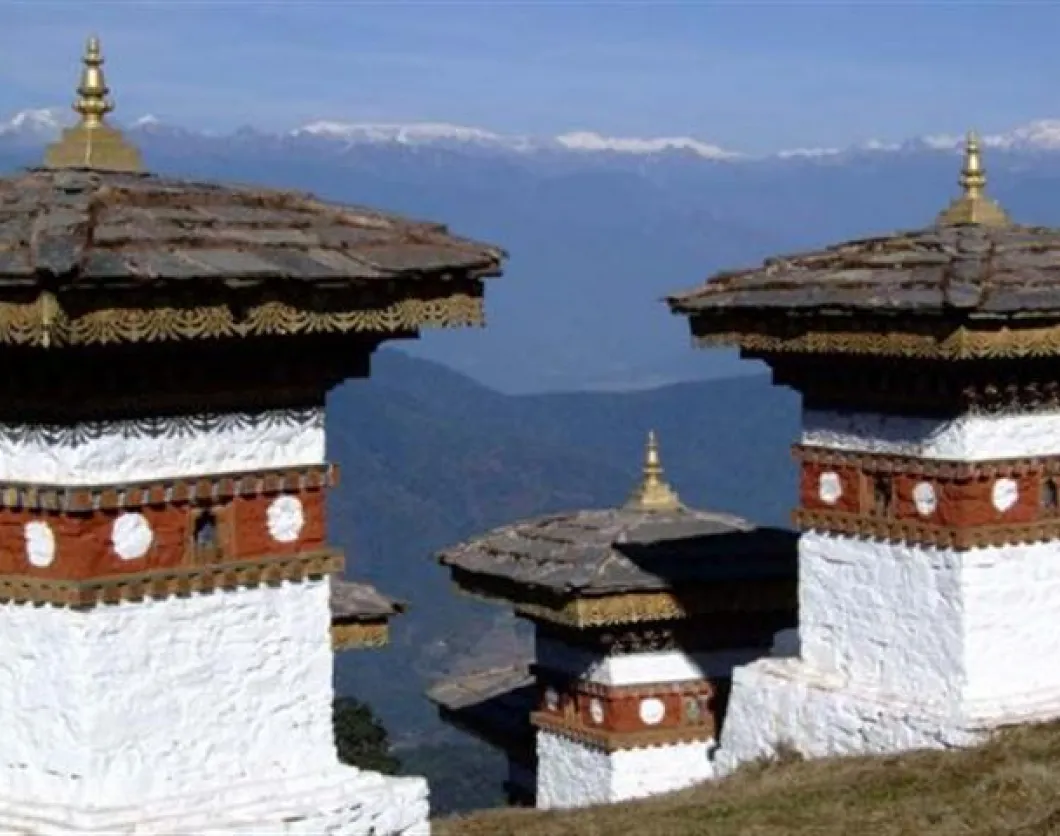Thimpu also spelled Thimphu is the capital city of Bhutan. It is located towards the western central part of the country. The city attained the capital status in 1961 and by 2005 there were 79,185 people living in it. It is spread along the western bank of the surrounding valley which was formed by the Wang Chuu River. Unlike most capital cities it is not served by an airport but heavily relies on the Paro airport which is connected to a major road.
Top travel sites include:
The Memorial Chorten
The stupa-styled monument is dedicated to the late King Jigme Wangchuck considered as the father of modern Bhutan. The structure houses statues and paintings which provide insight into the Buddhist way of life.
Simtokha Dzong
This structure was built in 1627 by Shabdrung Namgyal. It is situated on a low ridge 8 km down the Thimphu valley and houses the Institute for Language and Cultural Studies. Unique features found here include hundreds of finely made slate carvings placed behind wheels used for prayers in the courtyard.
Traditional Medicine Institute
Bhutan places a lot of emphasis on both traditional and allopathic medicines. Here you can buy most of the herbal medicines prepared from medicinal plants that abound in this kingdom. The Institute also trains traditional medicine practitioners. Basically visitors are not allowed into the complex due to hygiene reasons although they are free to walk around and enjoy views from outside.
National Library
Here you will find archaic texts about Bhutan history preserved at the library. Apart from thousands of ancient texts and manuscripts the library also contains modern academic books as well as blocks for printing prayer flags.
Zorig Chusum Institute
It is commonly referred to as the painting or art and crafts school. It offers a 6-year course on traditional art and crafts of this country. During a tour of the institute visitors can see students learning various skills offered at the school.
National Textile Museum
The Textile Museum located in Thimphu showcases Bhutanese textile which has become recognized as one of the most distinct art forms. The museum has six major themes that include weft pattern weaves, warp weaves, role of textile in religion, textile on indigenous fibers, achievement in textiles arts and royal collections. Here you will find the crowns of Bhutan's Kings, the first replica of the royal crown as well as other accessories that belonged to the royal family. The museum seeks to gradually become a center for textile studies. This will enable it to carry out research studies and documentation on Bhutanese textiles.
Transhichhoedzong
It is also commonly referred to as the fortress of glorious religion and was first built in 1641 but was later rebuilt in its present form by His Majesty King Jigme Wangchuck in 1965. It houses the main secretariat which is the throne room of the King of Bhutan. During summer the monks headed by His Holiness the Je Khenp use it as their home.
Craft Bazaar
The Bazaar usually comes alive on Tuesdays and Wednesdays in centenary Farmer's market. It is held under the patronage of department of cottage and small industries collaborating with department of culture. The market also assists in promotion and protection of traditional arts.
Thimphu Street Life
Norzim Lam is the main street and contains several small hotels and shops. Other major structures include the National Library, the Bhuttan Textile Museum, the Wangchuck hotel and the Swiss Bakery. There is a huge clock close to the main square adorned by dragons. The square comprises of an open-air theatre, Tashi supermarket as well as art and craft stores.
The Drentoen Lam Street which is off the main street comprises of banks, administrative buildings and the post office. Doebum Lam road runs alongside the main Norzim Lam, it contains the Department of Tourism, Ministry of Trade buildings and Chamber of Commerce.
Night Life
Tourists who travel to Thimphu city should note that it does not have much of a night life although there are a number of pool rooms and night clubs which mostly attract young people. One of the main places where the Bhutanese expatriates and elite meet is Om Bar as they dine and discuss business ventures. There is also the Plum restaurant which is frequented by civil servants.









